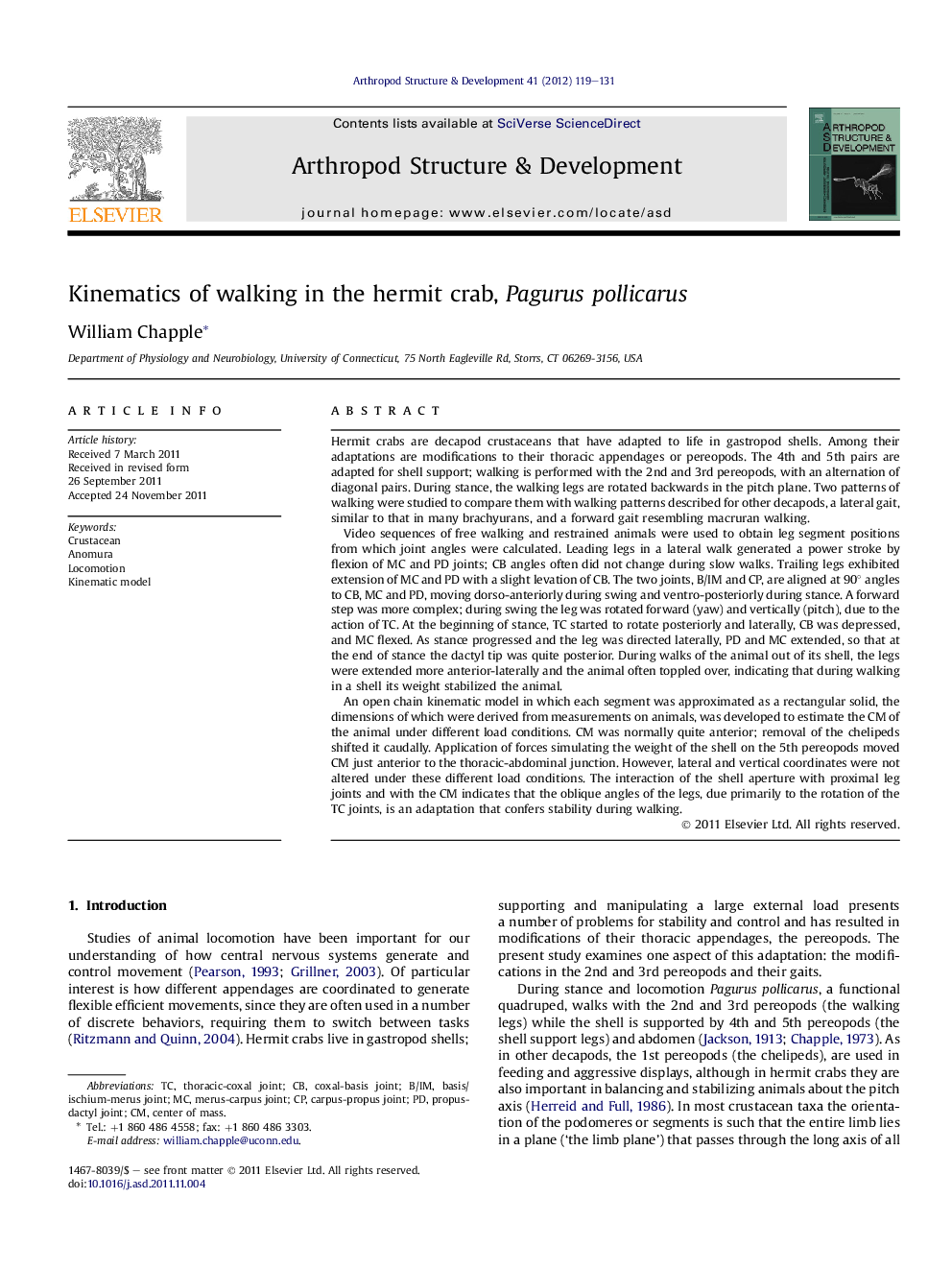| کد مقاله | کد نشریه | سال انتشار | مقاله انگلیسی | نسخه تمام متن |
|---|---|---|---|---|
| 2778768 | 1153165 | 2012 | 13 صفحه PDF | دانلود رایگان |

Hermit crabs are decapod crustaceans that have adapted to life in gastropod shells. Among their adaptations are modifications to their thoracic appendages or pereopods. The 4th and 5th pairs are adapted for shell support; walking is performed with the 2nd and 3rd pereopods, with an alternation of diagonal pairs. During stance, the walking legs are rotated backwards in the pitch plane. Two patterns of walking were studied to compare them with walking patterns described for other decapods, a lateral gait, similar to that in many brachyurans, and a forward gait resembling macruran walking.Video sequences of free walking and restrained animals were used to obtain leg segment positions from which joint angles were calculated. Leading legs in a lateral walk generated a power stroke by flexion of MC and PD joints; CB angles often did not change during slow walks. Trailing legs exhibited extension of MC and PD with a slight levation of CB. The two joints, B/IM and CP, are aligned at 90° angles to CB, MC and PD, moving dorso-anteriorly during swing and ventro-posteriorly during stance. A forward step was more complex; during swing the leg was rotated forward (yaw) and vertically (pitch), due to the action of TC. At the beginning of stance, TC started to rotate posteriorly and laterally, CB was depressed, and MC flexed. As stance progressed and the leg was directed laterally, PD and MC extended, so that at the end of stance the dactyl tip was quite posterior. During walks of the animal out of its shell, the legs were extended more anterior-laterally and the animal often toppled over, indicating that during walking in a shell its weight stabilized the animal.An open chain kinematic model in which each segment was approximated as a rectangular solid, the dimensions of which were derived from measurements on animals, was developed to estimate the CM of the animal under different load conditions. CM was normally quite anterior; removal of the chelipeds shifted it caudally. Application of forces simulating the weight of the shell on the 5th pereopods moved CM just anterior to the thoracic-abdominal junction. However, lateral and vertical coordinates were not altered under these different load conditions. The interaction of the shell aperture with proximal leg joints and with the CM indicates that the oblique angles of the legs, due primarily to the rotation of the TC joints, is an adaptation that confers stability during walking.
► Hermit crabs in shells are stable due to the rotation backwards in the pitch plane of their 2nd and 3rd pereopods.
► Alternation of these pereopods during walking as well as the changes in joint angles are similar to brachyurans.
► The leg rotation results from a loose coupling of the dorsal condyle of the thoracic-coxal joint.
Journal: Arthropod Structure & Development - Volume 41, Issue 2, March 2012, Pages 119–131